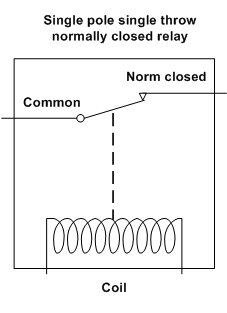M
Marvo
Okay here's one for the trainees. The background is that a friend of mine has an electric fence system that's got 2 zones. If anything touches the electrified fence wires it sets off an alarm and a little 12vdc flashing beacon on top of the control box. There are 2 of these flashing beacon lights, one for each zone.
He wants to add a floodlight that will activate only when one of the zone alarms activates. The idea is that he wants the floodlight to help him investigate the cause of the alarm especially at night.
To make it more difficult he can't use any outputs on the actual fence controller or even open up the control box because it will invalidate the warranty so he needs to pick up his floodlight control signal from the two 12vdc beacon lights on the top of the enclosure.
The floodlight will be a 230v 30watt LED.
When the fence alarm activates it also make a squealing noise so he wants to be able to clear the alarm condition on the fence controller and the floodlight remains on for a preset time (10mins).
Finally he wants a manual reset button that will switch the floodlight off if he doesn't need the full 10 minutes to investigate.

So here's your mission; as you can see in the drawing I made for you I've mounted the floodlight and an empty DIN rail enclosure already and I've run the supply cable to the floodlight. All you've got to do is come up with a circuit that works, give me a complete materials list and I'll need a materials only quotation as well
He wants to add a floodlight that will activate only when one of the zone alarms activates. The idea is that he wants the floodlight to help him investigate the cause of the alarm especially at night.
To make it more difficult he can't use any outputs on the actual fence controller or even open up the control box because it will invalidate the warranty so he needs to pick up his floodlight control signal from the two 12vdc beacon lights on the top of the enclosure.
The floodlight will be a 230v 30watt LED.
When the fence alarm activates it also make a squealing noise so he wants to be able to clear the alarm condition on the fence controller and the floodlight remains on for a preset time (10mins).
Finally he wants a manual reset button that will switch the floodlight off if he doesn't need the full 10 minutes to investigate.

So here's your mission; as you can see in the drawing I made for you I've mounted the floodlight and an empty DIN rail enclosure already and I've run the supply cable to the floodlight. All you've got to do is come up with a circuit that works, give me a complete materials list and I'll need a materials only quotation as well

























